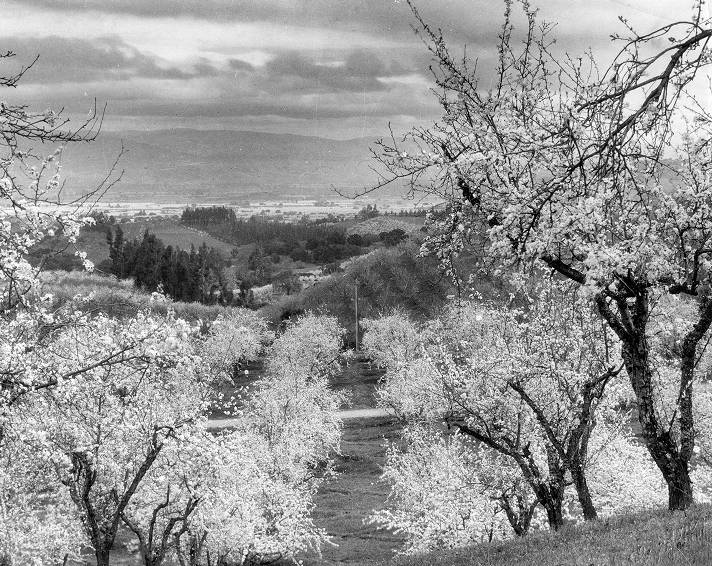
In the history of San José, before the tech growth and boom from the 1960s to the present, the most significant industry in the Santa Clara Valley was in agricultural products. While the agricultural and horticultural production of the valley was limited before American statehood (1850), by 1890 the valley had a total of 4,454,945 fruit trees, a doubling in only a decade. In 1915, the tally stood at some 7,829,677, a healthy 57% increase. Around the turn of the century, after a drought had damaged the valley's production and pride, an individual by the name of Edwin Sidney Williams organized the first "Blossom Festival.” Despite the bleak outlook that year, Williams wanted people to continue to celebrate and commemorate the valley's abundance and enjoy the orchard blossoms that blanketed the landscape during the spring. In each succeeding year the festival did gain popularity, with up to 20,000 people attending in one year alone. To many, the future of the valley’s agricultural and horticultural productivity remained positive.
By the inter-war years (1920s & 1930s), these industries were well developed and known around the world, with 18 canneries, 13 dried-fruit packing houses, and 12 fresh-fruit and vegetable shipping firms, some of the largest in the world. The industrial processes brought employment to thousands of workers all across the county. Not surprisingly, with another boost to the city’s pride, San José was one of the first California cities to create industries for making the mechanical equipment used in specialized farming and processing. This could be seen in the many labels, packing materials, and specialized equipment stamped “San Jose, Calif” that were used in the valley throughout these years. By the early 20th century, domestic population growth in the valley and immigration from abroad increased the productivity of these industries, supplying the world with renowned California fruits from the "Garden City." This abundance was the result of, according to the San José Chamber of Commerce in 1915, the “best ever” climate in the nation.

The warehouses that housed the canning and processing machinery were quite large as well. In many of them, like the one seen here, each worker performed a specialized task on the production line. In many workplaces they were often divided by gender and ethnicity. To break up the monotony, and in many cases to improve safety, some employers would rotate employees to different tasks periodically. Some of the more dangerous work involved processing the valley's most valuable products, like plums, apricots, and peaches, where hand-operated mechanical knives were used to remove the pits to prepare them for processing and canning.
The dominance of food processing in the valley gradually declined after World War II as industrialized manufacturing of other goods took over, and the growth of residential neighborhoods crowded out the orchard acreage. By the middle of the 1950s, when the county's population soared above half a million, the new economy took hold and the idea of the Santa Clara Valley as the valley of Heart's Delight faded into memory and nostalgia.
Further Reading from the California Room
- Check out SJPL's Digital Collections for additional photos.
- Clyde Arbuckle's History of San Jose, by Clyde Arbuckle
- Reflections of the Past: An Anthology of San Jose, edited by Judith Henderson
- A California Middletown: A Social History of San Jose in the Depression, by Glenna Matthews
by Mark Robertson


Add a comment to: Looking Back: Canning in the Valley of Heart’s Delight